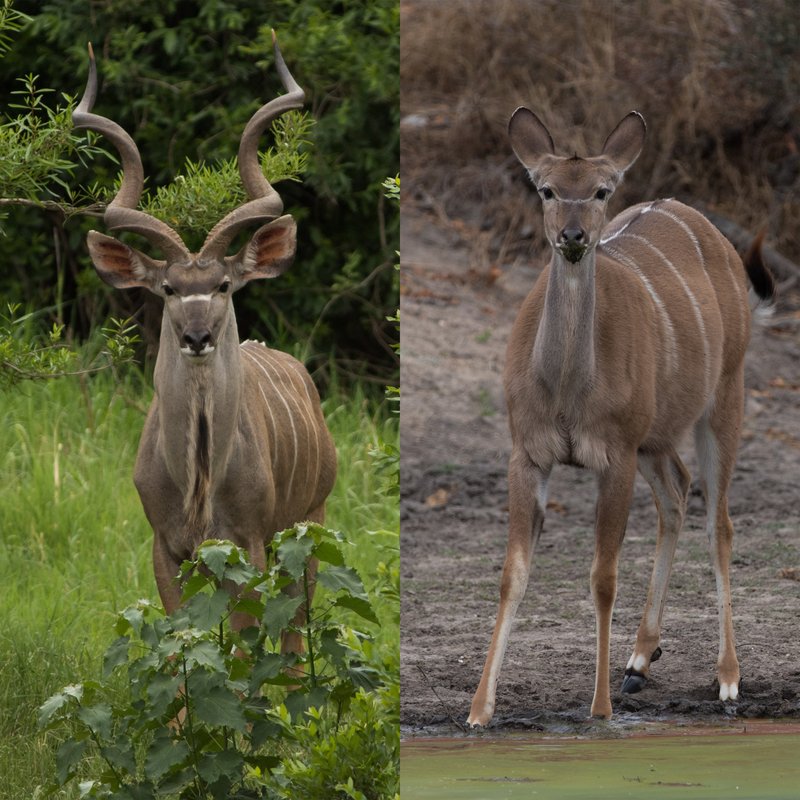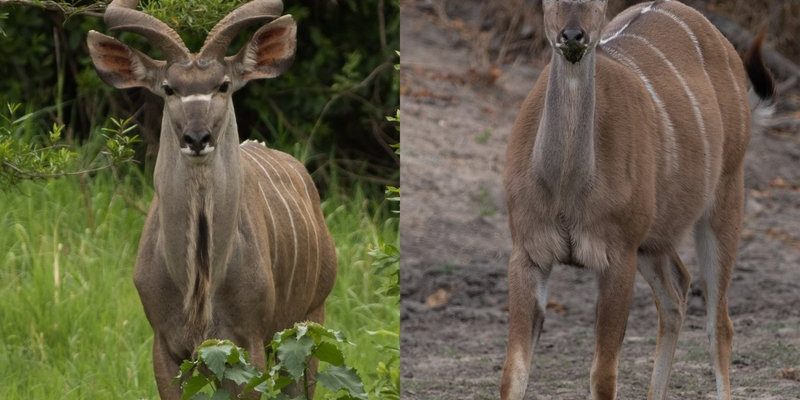
Understanding animal intelligence can sometimes feel like learning a different language. We often assume that intelligence is only about having a large brain or solving complex problems, but it’s more nuanced than that. Think of it this way: intelligence can manifest in various forms, from problem-solving and social interactions to memory and adaptability. So, let’s explore how the Greater Kudu stacks up when it comes to cognitive abilities and behavior.
The Greater Kudu: An Overview
Before we dive into the smarts of the Greater Kudu, let’s get to know them a bit better. Native to Africa, these graceful antelopes roam the savannas and woodlands, primarily in countries like South Africa, Zimbabwe, and Namibia. They are known for their remarkable size—males can weigh between 400 and 600 pounds, while females are generally smaller.
One of the standout features of the Greater Kudu is its horns, which can twist impressively, sometimes reaching over three feet long! But beyond their physical attributes, Greater Kudus are social animals. They often travel in small groups, which brings us to how their intelligence plays a role in their interactions and survival in the wild.
Cognitive Abilities: What Makes Them Smart?
When we talk about the intelligence of the Greater Kudu, it’s essential to consider various aspects of their behavior. They might not solve puzzles like a dolphin or show creativity like a crow, but they have their own set of impressive skills.
For starters, Greater Kudus have fantastic memories. They can remember the locations of food sources, water, and safe spaces, which is crucial for their survival in environments where resources can be scarce. Imagine being able to navigate a vast landscape just by remembering the best spots—pretty smart, right? This memory helps them avoid predators as well, as they learn from past experiences and can identify safe routes for escaping danger.
Social Structures and Communication
Another aspect of their intelligence is found in their social structures. Greater Kudus are usually seen in groups, primarily consisting of females and their young. The males tend to be more solitary, but they still engage in social interactions, especially during mating season.
Communication plays a vital role here. Kudus use a range of vocalizations and body language to signal warnings or share information about predators. Their alertness and teamwork in the face of danger showcase a level of social intelligence that’s impressive. Think about how a school of fish changes direction to avoid a threat—similar instinctual behavior happens in Kudus.
Adaptability: Surviving in the Wild
One of the greatest indicators of intelligence in the animal kingdom is adaptability. Greater Kudus are incredibly flexible when it comes to their habitat preferences. While they have a preferred environment, they can thrive in various situations, from dense woodlands to open savannas.
This adaptability isn’t just about their physical environment but also how they cope with threats. For instance, if a specific area becomes dangerous due to predators, they can recognize that shift and relocate to safer grounds. This ability to adjust and thrive amid changing conditions is a sign of cognitive flexibility and problem-solving skills.
Problem Solving in Everyday Life
When thinking about problem-solving, you might picture a monkey using tools, but Kudus have their own version of cleverness. For example, when navigating through thick brush, they have a knack for finding the best routes without getting stuck. They seem to know instinctively when to leap over obstacles or when to take a detour around thorny bushes.
Even in their foraging behavior, Kudus demonstrate intelligence. They can assess which plants are safe and nutritious, showing that they not only remember where things are but also understand their environment in more depth. Imagine knowing which fruits are ripe and which ones are best avoided—it’s all part of their survival strategy.
The Role of Instincts vs. Intelligence
It’s fascinating to discuss the balance between instinct and intelligence in animals. Greater Kudus rely heavily on instinct, especially for survival. Their instincts help them identify potential dangers and react swiftly.
However, intelligence comes into play when they need to adapt those instincts to new situations. For example, if they encounter a new type of predator, their instinct might kick in, but their ability to learn from that experience and modify their behavior for the future underscores their cognitive capabilities. It’s like having a built-in GPS that also learns as you drive!
Conservation and Understanding Behavior
Understanding the intelligence and behavior of Greater Kudus isn’t just an academic exercise; it has real-world implications for conservation efforts. Knowing how these animals think and interact can help in creating effective strategies for their protection.
Habitat preservation is crucial, as it allows these smart creatures to thrive and continue their natural behaviors. By maintaining the balance of their ecosystems, we help ensure that their cognitive skills can flourish. This understanding also aids in creating wildlife reserves that cater to their needs, allowing them to express their natural behaviors freely.
How We Can Help
You might be wondering how you can contribute to the preservation of the Greater Kudu. Supporting wildlife organizations, visiting conservation parks, or even spreading the word about these fascinating creatures can make a difference. Every small effort counts, helping to create a future where the Greater Kudu can thrive and continue to showcase their unique intelligence.
So, how smart is a Greater Kudu? Honestly, they might not be solving equations or painting like the great artists, but their cognitive abilities shine through in their memory, social interactions, adaptability, and instinctual behaviors. They navigate their world with a combination of learned experiences and natural instincts, showcasing a form of intelligence that’s beautifully suited to their environment.
Next time you see a Greater Kudu, remember there’s more than meets the eye. These graceful antelopes possess a remarkable brain beneath those stunning horns, reminding us that intelligence takes many shapes in the animal kingdom.

